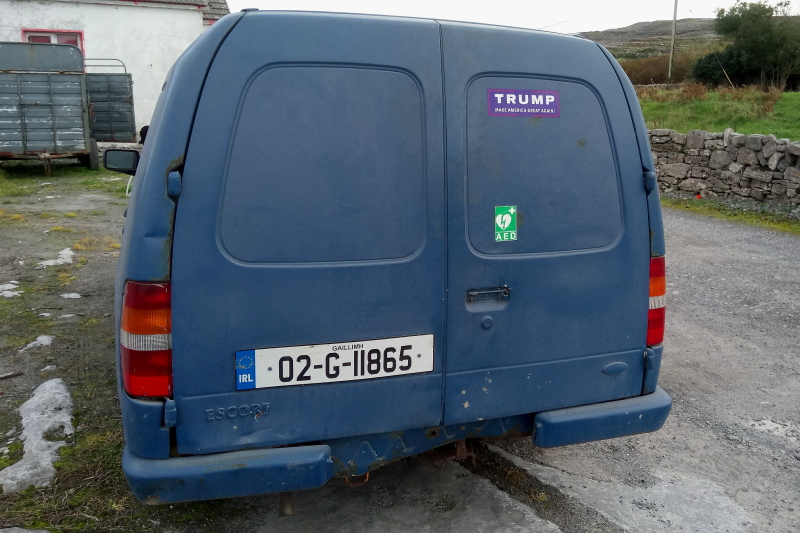I was out on Inishmore during the week after deciding not to do the usual full week all by myself so three days was a comprise. On the second day I made my way west as I usually do. At around midday I was in the Creig and Chéirín area between The Seven Churches and Bun Gabhla, This area contains the most western clump of Sycamores on the island. There are only a few small plots of Willows further west of here. These Sycamores had held a Yellow-browed Warbler, 3 Chiffchaffs, Garden Warbler and Blackcap at the time. As I had finished up here I returned to where I had left the bike by a derelict building surrounded by a fuchsia hedge. It's a spot I always have a quick look into as I'm passing but I'm not even sure if I've ever seen a phyllosc warbler in here before. As I was just about to move on I spotted movement in the form of a phyllosc. I was immediately struck by the bright green wings, rump and tail which contrasted with a very pale washed out mantle, tertials, head and underparts. The lime green rump and tail were particularly noticeable in flight. The only possible confusion species would be Siberian Chiffchaff. It soon became clear that it was a bonelli's type - the only question now was Western or Eastern. The sure fire way of separating the two is on their vocalisations. Thanks to modern technology in the form of the Xeno Canto Bird sounds app I was able to download the contact calls of both species there and then. The calls are very different e.g.
Western Bonelli's Warbler http://www.xeno-canto.org/270106
Eastern Bonelli's Warbler http://www.xeno-canto.org/24719
The bird wasn't particularly skulky but when I played the Western Bonelli's call it showed great interest and approached my position at such close quarters that I couldn't focus my camera on it! Unfortunately it never called once during this encounter and it later retreated back in a thick bank of fuchsia. It could be seen at very close quarters here but proved impossible to photograph thanks to the thick foliage but thankfully it was heard calling on one occasion confirming it as Western. The following day it moved out of this garden to a hedge of willow, hawthorn and elder to the north of the main road and was heard calling on several occasions. It sounded quite like a calling Greenfinch to my ears. It was again present the next day. This is the fourth reported Western Bonelli's Warbler this year with the other three being reported from Cork unsurprisingly.
There are fourteen previously accepted records of Western Bonelli's Warblers up to the end of 2014 for Ireland (eight in Cork, four in Wexford and two in Waterford). This will be the first time that the species has been recorded away from the south coast (that is if this record is accepted by the IRBC). There have been a few recorded that were't determined to species level and we are still awaiting our first confirmed Eastern Bonelli's Warbler here.



























































